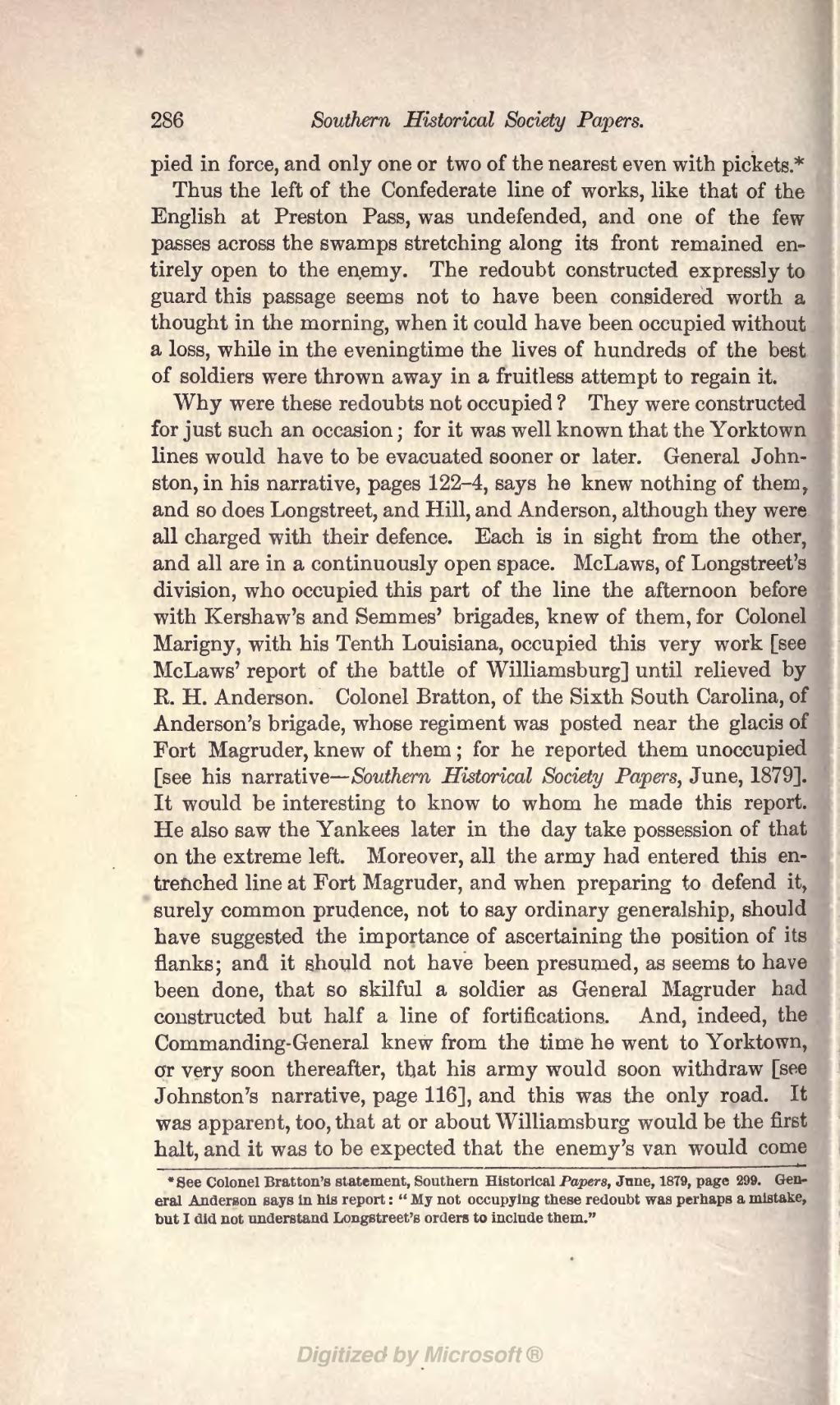pied in force, and only one or two of the nearest even with pickets.[1]
Thus the left of the Confederate line of works, like that of the English at Preston Pass, was undefended, and one of the few passes across the swamps stretching along its front remained entirely open to the enemy. The redoubt constructed expressly to guard this passage seems not to have been considered worth a thought in the morning, when it could have been occupied without a loss, while in the eveningtime the lives of hundreds of the best of soldiers were thrown away in a fruitless attempt to regain it.
Why were these redoubts not occupied? They were constructed for just such an occasion; for it was well known that the Yorktown lines would have to be evacuated sooner or later. General Johnston, in his narrative, pages 122-4, says he knew nothing of them, and so does Longstreet, and Hill, and Anderson, although they were all charged with their defence. Each is in sight from the other, and all are in a continuously open space. McLaws, of Longstreet's division, who occupied this part of the line the afternoon before with Kershaw's and Semmes' brigades, knew of them, for Colonel Marigny, with his Tenth Louisiana, occupied this very work [see McLaws' report of the battle of Williamsburg] until relieved by R. H. Anderson. Colonel Bratton, of the Sixth South Carolina, of Anderson's brigade, whose regiment was posted near the glacis of Fort Magruder, knew of them; for he reported them unoccupied [see his narrative—Southern Historical Society Papers, June, 1879]. It would be interesting to know to whom he made this report. He also saw the Yankees later in the day take possession of that on the extreme left. Moreover, all the army had entered this entrenched line at Fort Magruder, and when preparing to defend it, surely common prudence, not to say ordinary generalship, should have suggested the importance of ascertaining the position of its flanks; and it should not have been presumed, as seems to have been done, that so skilful a soldier as General Magruder had constructed but half a line of fortifications. And, indeed, the Commanding-General knew from the time he went to Yorktown, or very soon thereafter, that his army would soon withdraw [see Johnston's narrative, page 116], and this was the only road. It was apparent, too, that at or about Williamsburg would be the first halt, and it was to be expected that the enemy's van would come
- ↑ See Colonel Bratton's statement, Southern Historical Papers, June, 1879, page 299. General Anderson says in his report: "My not occupying these redoubt was perhaps a mistake, but I did not understand Longstreet's orders to include them."
